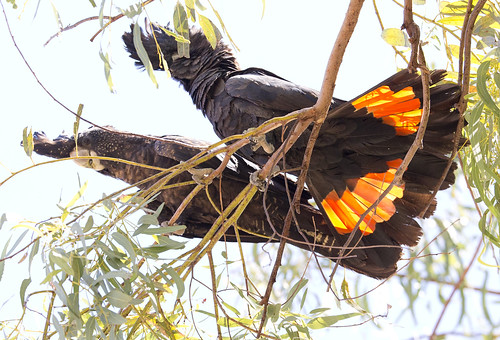 Red-tailed black cockatoos will benefit from this habitat restoration. Image by Jim Bendon ONE thousand native tree seedlings have been planted by volunteers from Conservation Volunteers Australia at Wedge Tailed Eagle Retreat, on the Blackwood River, to create an extensive habitat for the black cockatoo.
Red-tailed black cockatoos will benefit from this habitat restoration. Image by Jim Bendon ONE thousand native tree seedlings have been planted by volunteers from Conservation Volunteers Australia at Wedge Tailed Eagle Retreat, on the Blackwood River, to create an extensive habitat for the black cockatoo.
Retreat owner Silvijana Kardos has long been keen to retain the population of black cockatoos on her property. For the past 12 years she has fenced off 16 hectares leaving them to rehabilitate naturally.
But she noticed some areas had not fully recovered .
The conservation volunteers, with help from the Perth Advocates for the Earth aimed to rehabilitation 16ha of a 40.5ha property with suitable plants, provide food source and shelter for the black cockatoos, rehabilitate land and potentially reduce salinity and encourage dialogue and positive involvement by the local community with the view others in the area might follow suit.
A grant from Australian Ethical Investments allowed the groups to buy plants and guards.
The project took 13 months to organise with help, assistance and advice from Katie Haynes and Aaron Jagger (Conservation Volunteers Australia) and volunteers Marcus, Tom, Ricarda, Susanne, Charles, Raz and Darius, Blackwood Waterwatch co-ordinator Natalee Kuser, WA Museum curator of ornithology Ron Johnston, the Blackwood Basin Group's Felicity Willett, Matt Fossey from Birdlife Australia, Nerilee Boshammer from Southwest Catchment Council, Aaron Jagger and Katie Haynes from Conservation Volunteers Australia, Bridgetown Community Landcare Nursery, Boyanup Botanicals, Tony Freeman from APACE and Sheila Howatt from the Department of the Evironment and Conservation, Greenway En terprises, Forestry Tools and Kennards Hire.